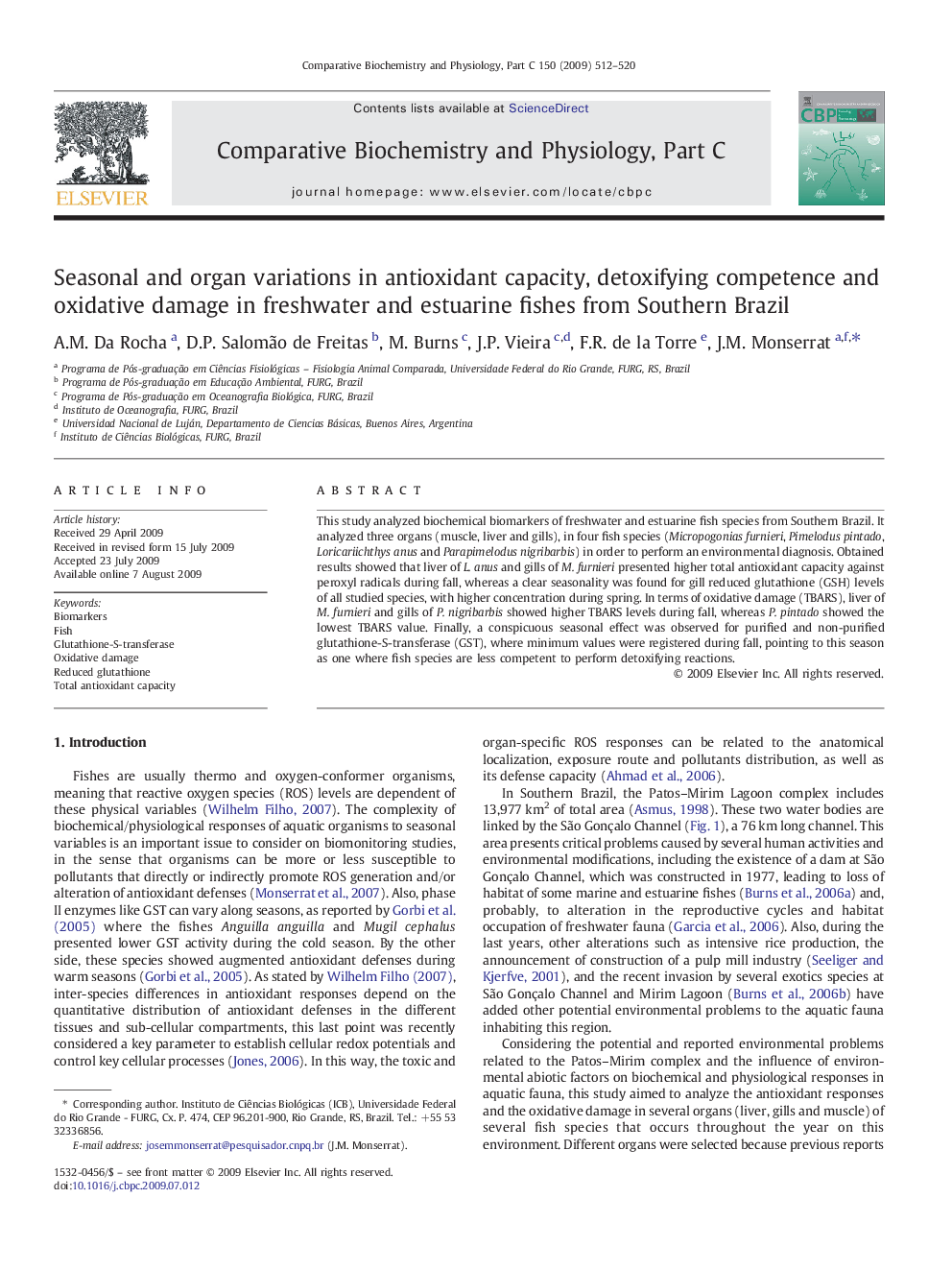| Article ID | Journal | Published Year | Pages | File Type |
|---|---|---|---|---|
| 1977724 | Comparative Biochemistry and Physiology Part C: Toxicology & Pharmacology | 2009 | 9 Pages |
This study analyzed biochemical biomarkers of freshwater and estuarine fish species from Southern Brazil. It analyzed three organs (muscle, liver and gills), in four fish species (Micropogonias furnieri, Pimelodus pintado, Loricariichthys anus and Parapimelodus nigribarbis) in order to perform an environmental diagnosis. Obtained results showed that liver of L. anus and gills of M. furnieri presented higher total antioxidant capacity against peroxyl radicals during fall, whereas a clear seasonality was found for gill reduced glutathione (GSH) levels of all studied species, with higher concentration during spring. In terms of oxidative damage (TBARS), liver of M. furnieri and gills of P. nigribarbis showed higher TBARS levels during fall, whereas P. pintado showed the lowest TBARS value. Finally, a conspicuous seasonal effect was observed for purified and non-purified glutathione-S-transferase (GST), where minimum values were registered during fall, pointing to this season as one where fish species are less competent to perform detoxifying reactions.
